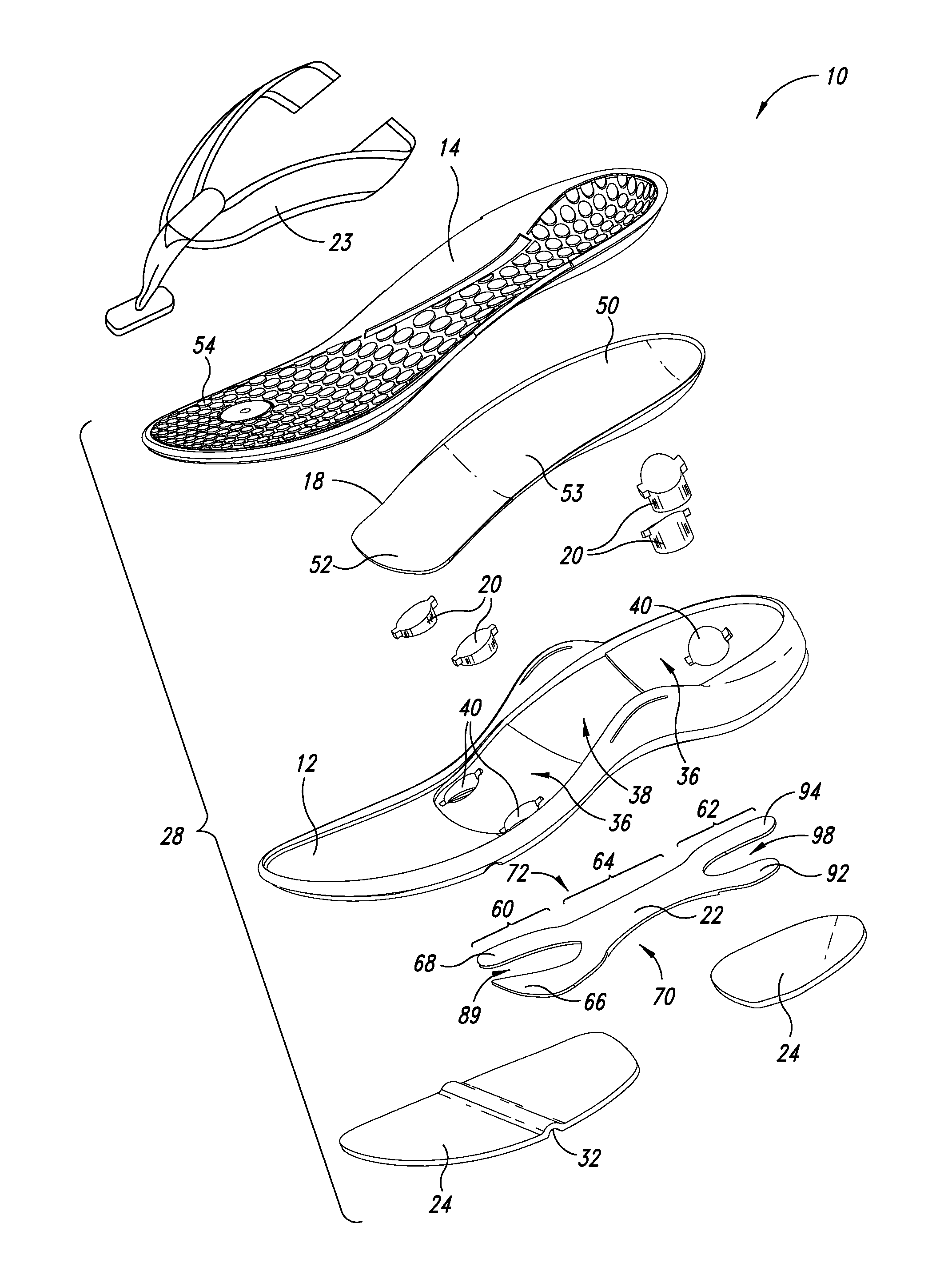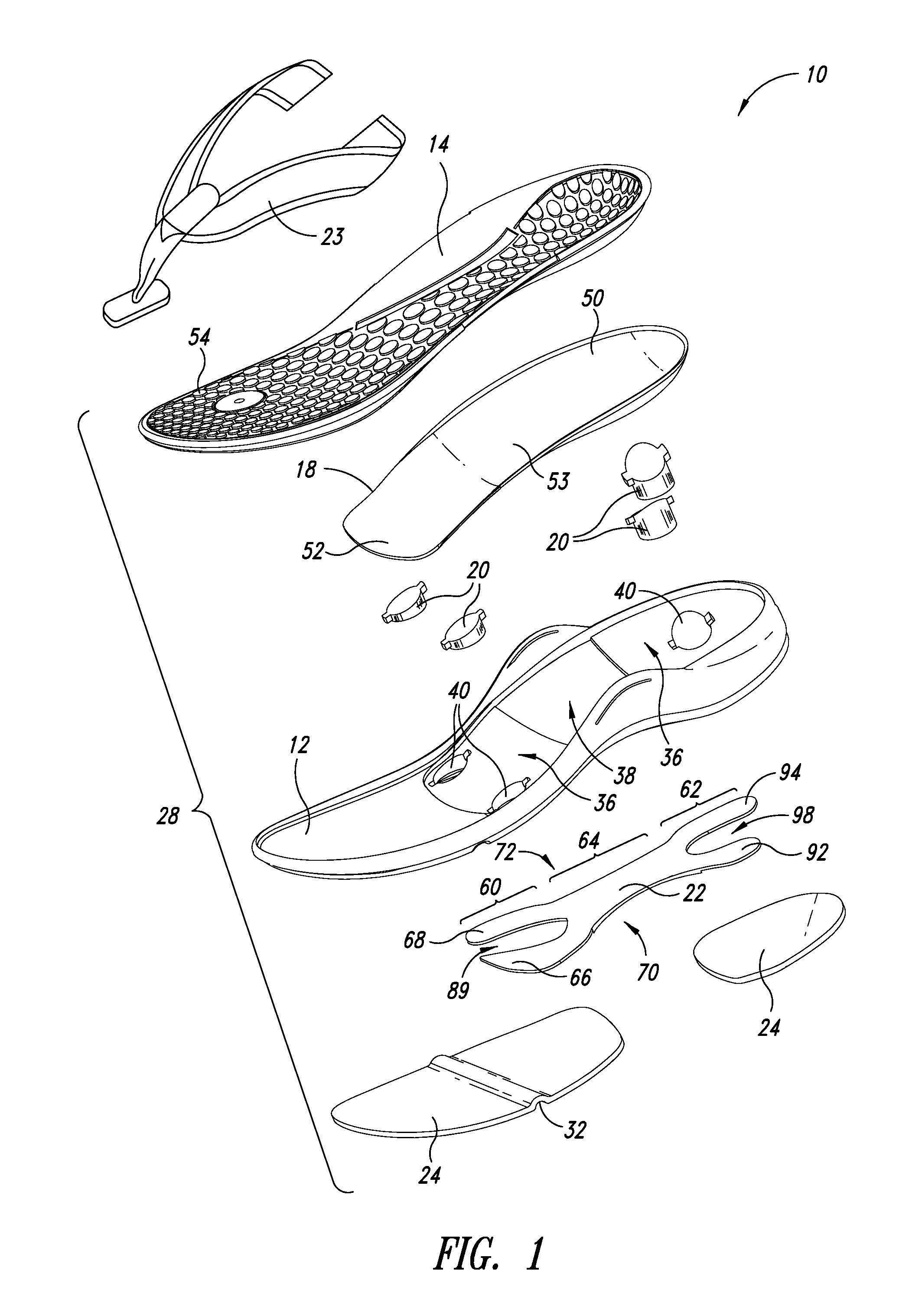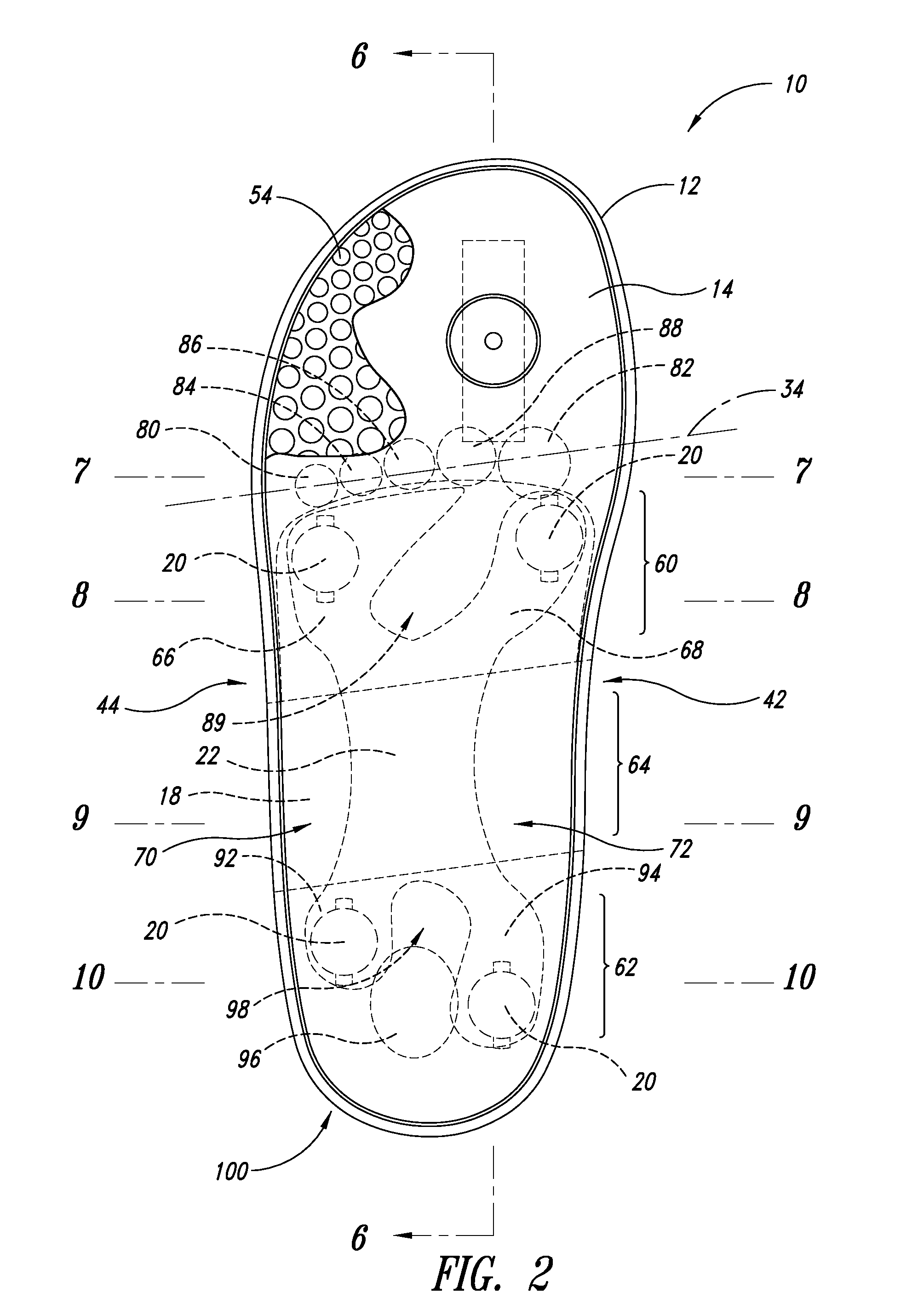[0008]The footwear having orthotic midsoles described herein is configured to provide enhanced support and may compensate for various foot abnormalities or deformities in a particularly robust and durable form factor.
[0010]A plurality of support plugs may be positioned within the midsole platform to help to stabilize the orthotic shell in a semi-rigid position. The support plugs may extend through the midsole platform from a lower surface thereof to an opposing upper surface to come into contact with underside surfaces of the orthotic shell. The support plugs may cooperate to provide a multi-
point contact structure, such as, for example, a contact structure having three, four, five or more points of contact, to hold the orthotic shell in a particularly stable manner. For instance, a pair of supports may be positioned to underlie the forefoot portion of the orthotic shell at medial and lateral sides thereof. Another pair of support plugs may be positioned to underlie the heel portion of the orthotic shell at medial and lateral sides thereof. The number of support plugs and durometer of the same may vary to provide different levels of support and comfort.
[0011]A shank is preferably coupled to the midsole platform to increase structural flexural and
torsional rigidity of the footwear and provide a foundation for the support plugs. The support plugs may be positioned to span completely between portions of the shank and the orthotic shell. For example, in a four-
point contact arrangement, a separate projection or arm extending from a central portion of the shank may underlie each of the support plugs which in turn contact and support the orthotic shell. More particularly, a projection of the front portion of the shank may extend along a lateral side of the footwear to underlie a region of the midsole platform behind and near a contact area corresponding to the
metatarsal head of the fifth metatarsal of the foot. Another projection may extend along a
medial side of the footwear to underlie a region of the midsole platform behind and near a contact area corresponding to the
metatarsal head of a
first metatarsal of the foot. Support plugs may be provided on these projections to semi-rigidly support the forefoot portion of the orthotic shell at medial and lateral positions. Similarly, projections may extend from the central portion of the shank toward the rear end of the footwear along lateral and medial sides of the footwear, respectively, to underlie areas transversely offset from a contact area corresponding to the posteriorly lateral aspect of the heel of the foot. Support plugs may be provided on these projections to semi-rigidly support the heel portion of the orthotic shell at medial and lateral positions. The support plugs are preferably made of a material having less pliancy than the surrounding midsole platform to reduce a compression rate of the midsole relative to a midsole formed entirely of
ethylene vinyl acetate (also known as EVA) or a similar material.
[0012]Various components of the composite sole may assist in providing a wedging effect when the footwear is configured to support a wearer's forefoot in a forefoot valgus or forefoot varus position. For example, as previously discussed, the orthotic shell itself may be shaped to support the distal aspect of the metatarsal shafts proximal to the metatarsal heads in a progressively elevated position from one side of the forefoot toward an opposing side of the forefoot to simulate a forefoot valgus wedge (forefoot everted, relative to rear foot position) or a forefoot varus wedge (forefoot inverted, relative to the rear foot position). In addition, a portion of the front end of the shank may vary progressively in thickness from one side thereof to an opposing side thereof to create a wedge underlying the forefoot portion of the orthotic shell to simulate a forefoot valgus wedge (forefoot everted, relative to rear foot position) or forefoot varus wedge (forefoot inverted, relative to rear foot position). Alternatively, the midsole platform itself or an insertable support structure received therein may vary progressively in thickness from one side thereof to an opposing side thereof to create a wedge underlying the forefoot portion of the orthotic shell.
[0014]The footwear may also be formed to include several additional features to facilitate natural flexing of the foot during use. For instance, the midsole platform may include a flex groove extending across a width thereof in a position and orientation corresponding generally to a
reference line defined by metatarsal phalangeal joints of the foot. In this manner, the flex groove can facilitate a natural bending of the foot at the metatarsal phalangeal joints. As another example, the shape of a front portion of the midsole platform may gradually rise to form a
toe rocker feature to facilitate rolling contact of the sandal with the ground or other surface. Additionally, a rear lateral portion of the midsole platform may include an angled
heel strike portion to facilitate rolling contact as the rear end of the sandal strikes the ground during use.
 Login to View More
Login to View More  Login to View More
Login to View More 


